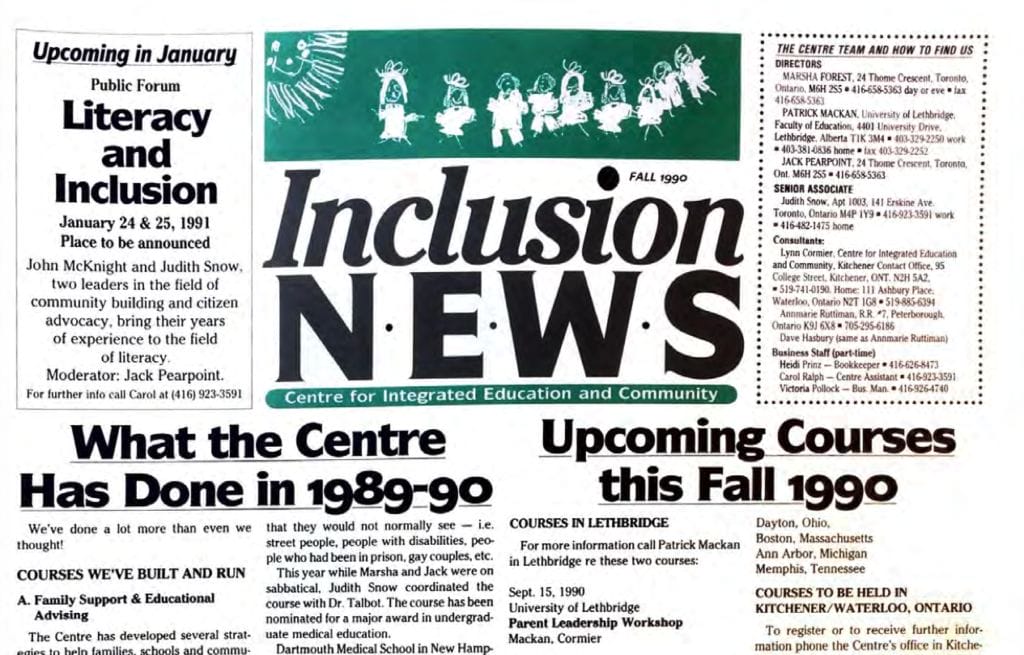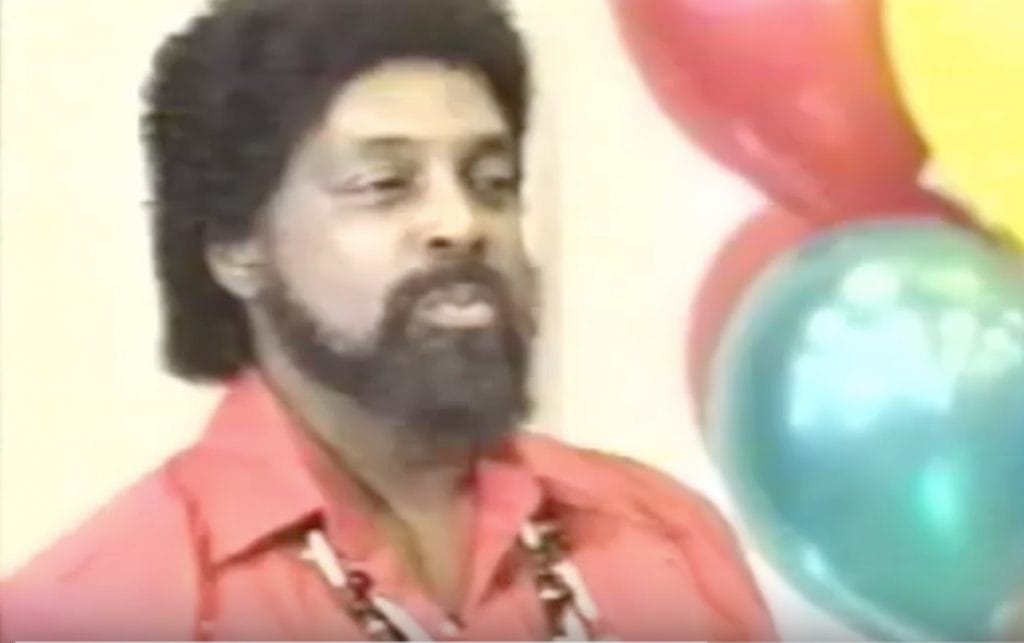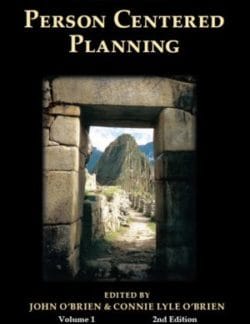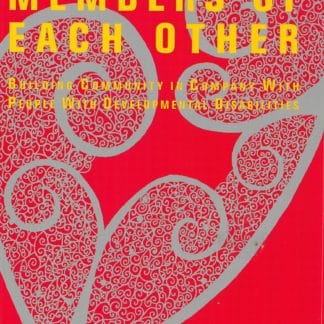The Inclusion Press Logo
Our logo is a combination of three ‘korus’. A koru is a ‘fiddle head’ – an
‘unfolding fern’ that symbolizes new life, hope, eternity. It is a fractal, with endless and beautiful repetition of a pattern. Koru is a Maori word chosen because of our deep connections with the Tuhoe tribe of the Aotearoha (New Zealand) Maoris. All three korus are reaching out – growing – making connections …
There are three. There are three of us in the internal Inclusion Press team – Cathy, Lynda and Jack. And then like the koru – it unfolds endlessly with connections.
There are three components our work: Inclusion Press (resource materials), Changemakers (resource connections) and the Marsha Forest Centre (inclusive education and family support resource development) – with the same ‘North Star vision’ and different ways to get there.
There are three key components in our vision: Inclusion; Community; Diversity.

Inclusion is about ALL of us
Inclusion is about living full lives — about learning to live together.
Inclusion makes the world our classroom for a full life.
Inclusion treasures diversity and builds community.
Inclusion is about our ‘abilities’ — gifts and how to share them.
Inclusion is NOT just a ‘disability’ issue.

Today’s Mission
To boldly go where everyone else has already been.
“All means all… No but’s”
Inclusion Means WITH… Not just IN.
Together WE are Better!
We must build a bigger WE… We cannot do this alone!
Inclusion is about living full lives – about learning to live together in community, celebrating all of our diversity and welcoming the gifts of everyone.
What people want is simple:
someone to love, somewhere to live, somewhere to work and something to hope for.
Inclusion.com is a virtual bath in the history and reality of inclusion. We have collected and curated a wide ranging collection of articles, videos, books – resources that summarize both the evolution and practice of inclusion – as told by many of the key authors and developers of Person Centered Practices – Circles of Support, MAPS, PATH, and more.
The term INCLUSION in this field was coined at a gathering we hosted in August, 1989, when the terms integration and Integrated education had been so misused as to have no meaning. Today, inclusion has too has been ‘thinned’ but we believe that it is time to reclaim its deep roots and profoundly liberating practices.
This site is a collection of resources (some fo sale, mostly free downloads). It is an historical treasure trove of articles, stories, videos from Canada, United States and beyond, reflecting the global outreach of these ideas and practices. By telling stories and sharing approaches to learning, we aspire to create/nurture new pathways to the future. The site is complex — layered and deep, because it is a compilation of the evolution of the learning of a group of committed colleagues about the true nature of inclusion (for all) over four decades. We continue our learning journey… Many listings are ‘out of print’ and unavailable – but we have gathered a broad selection to flesh out the deep roots of inclusion. The foundation of these resources was and is the extraordinary courage and resilience of individuals and families who continue to share their life experiences that motivate many of us to formulate processes to liberate the next generations. Our list of authors, practitioners and leaders is not comprehensive or complete – but it reflects the life work, commitment and talents of a network of like minded souls who collaborated to create the resources on this site.
We hope you will dig deep – recall, discover and rediscover the collected wisdom of many through inclusion.com. Through our collective advocacy, we have progressed through the phases of institutionalization, segregation, integrated education… and we continue the journey to genuine inclusion for all.
*This site is intended to Inspire with by telling stories, to share approaches to learning, to make powerful resources available to citizens who want to create new pathways to the future. The site is complex – layered and deep, because it is a compilation of the evolution of the learning of a group of committed colleagues about the true nature of inclusion (for all) over four decades. We continue our learning journey…

Who We Are
- INCLUSION HISTORY Videos – organized in categories

INCLUSION 101
What is inclusion? Simply – the opposite of exclusion. Inclusion is a core value in our work because of the personal and societal devastation that results from exclusion. Humans are social creatures, and without connections with others, we wither.
Inclusion is a global value. It means ALL of us – in spite of our differences which can loving, exciting, engines of creativity – as well as complex, frustrating – even terrifying. But we were all born in – and that is where we need to grow and thrive.
Exclusion breeds isolation, loneliness, despair and violence (both internalized and externalized). Inclusion is not a ‘top down’ charitable dole to the ‘deserving poor’. Inclusion is among equals – regardless of the trappings of race, colour, creed, or economics.
Inclusion means all of us – everywhere, anytime, all the time. NO segregated anything: classrooms, group homes, old age care facilities, prisons. An inclusive society figures out how we can all be included – over the threshold and interacting WITH other people. This is not ‘one size fits all’. It is the opposite. Inclusion creates millions of unique personalized choices to accommodate our similarities and our differences. None of them should be segregated – alone. (Note – a person can choose solitude, which is different than being excluded).
Inclusion means that we invest the time – the patience – to understand one another. Everyone communicates. The complexities of our learning and communication styles vary enormously – which is why we must have mastery in Listening. Every person deserves respect. When we listen with deep respect, regardless of how long it takes, we will discover that everyone has contributions to make. They must be revealed, nurtured and contributed to each other, to our families, our communities, our society. Excluding anyone diminishes the richness of our smorgasbord of talents. And we actually need the diversity of everyone’s contributions – everyone’s gifts to be the best society we can be. Sustaining diversity is a survival strategy for humankind.
Nature has been evolving cycles of complexity that thrive and survive over billions of years. Humans are new to the game. Our current social structures, brilliant as they are, are only preliminary designs – prototypes of what can be. We must choose not to fear the future, so new and better designs can emerge. There can be more and better ahead – if we sustain the diversity of our primordial soup of talents. And we will have to be humble enough to acknowledge that our current state is an early iteration of possibilities and change.
Heather Simmons gives a short powerful summary of The Values of Inclusion.

What is Inclusion?
In 1955 the story of a brave and tired woman named Rosa Parks was put in front of this country’s awareness. They say this woman had gotten tired, in fact, historically tired of being denied equality. She wanted to be included in society in a full way, something which was denied people labeled as “black” people! So Rosa Parks sat down on a bus in a section reserved for “white” people. When Rosa was told to go to “her place” at the back of the bus, she refused to move, was arrested, and history was challenged and changed. All of this happened because Rosa Parks was tired, historically tired of being excluded. She had sat down and thereby stood up for inclusion!
Another powerful cry for “inclusion” is being heard today. This new cry is being raised by people with unrecognized abilities, (the so-called “disabled”). Many people whose abilities are regularly denied or ignored feel that society is not honoring the right to participate in society in a full way. Part of the call is for better accessibility, such as more wheelchair ramps, more signs and materials in braille, community living, etc. The Americans with Disabilities Act represents an attempt to hear the “inclusion” cry. However, much more needs to be done including a search for an acceptable definition and practice of inclusion. Across this country a definition of inclusion is offered. It is generally accepted that “Inclusion” means inviting those who have been historically locked out to “come in.” This well-intentioned meaning must be strengthened. A weakness of this definition is evident. Who has the authority or right to “invite” others in? And how did the “inviters” get in? Finally, who is doing the excluding? It is time we both recognize and accept that we are all born “in”! No one has the right to invite others in! It definitely becomes our responsibility as a society to remove all barriers which uphold exclusion since none of us have the authority to “invite” others “in!”
So what is inclusion? Inclusion is recognizing our universal “oneness” and interdependence. Inclusion is recognizing that we are “one” even though we are not the “same.” The act of inclusion means fighting against exclusion and all of the social diseases exclusion gives birth to — e.g. racism, sexism, handicapism, etc. Fighting for inclusion also involves assuring that all support systems are available to those who need such support. Providing and maintaining support systems is a civic responsibility, not a favor. We were all born “in.” Society will immediately improve at the point we honor this truth!
Dealing with Change (formerly Tools for Change)
In 2001, Inclusion Press created a CD-ROM titled Tools for Change. It was a 15 year compendium of resources we had used in many contexts. The CD-ROM is no longer available, but the contents are now here for your use – free. We hope they are useful.



